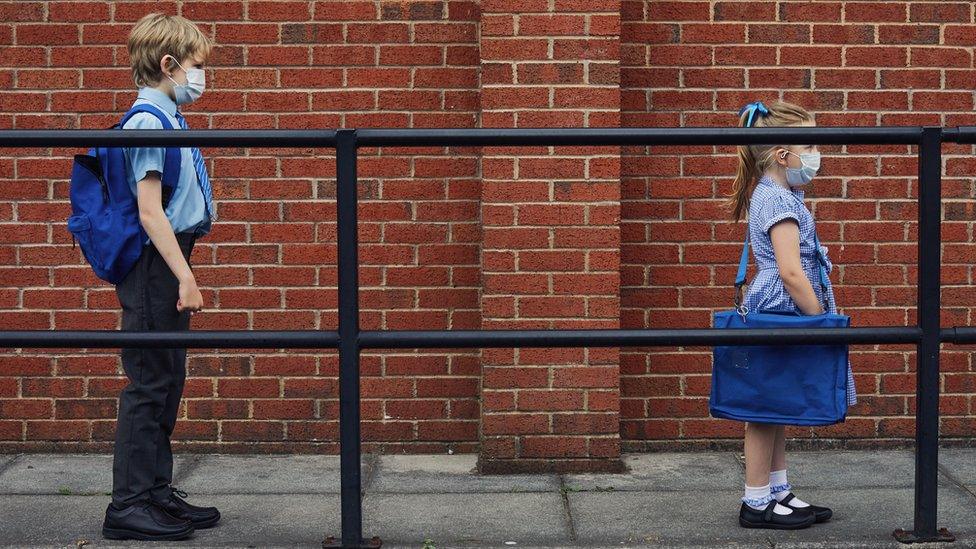Coronavirus: Bus journeys will be first challenge of new school year
- Published
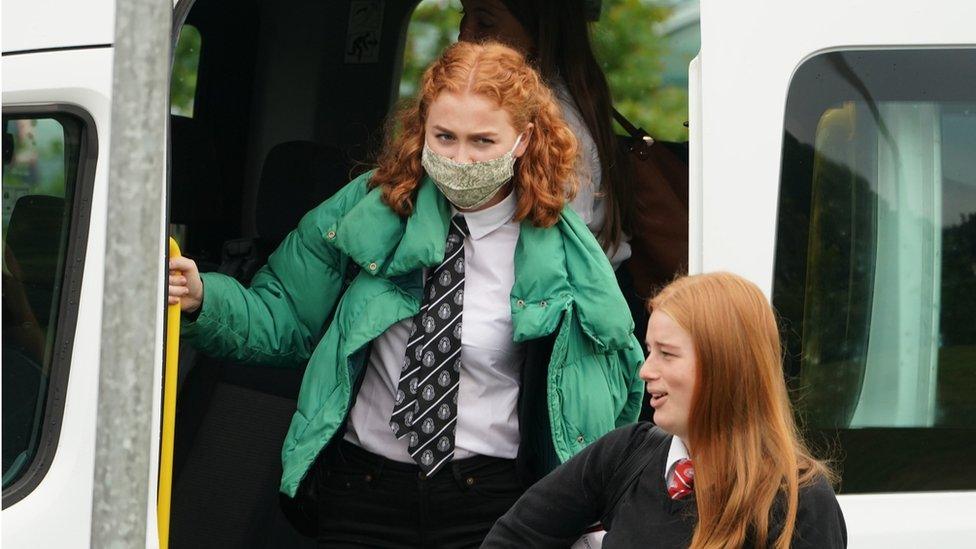
Schools in Scotland have already reopened
Teachers in England and Wales have been preparing to welcome back children for the autumn term, putting in place coronavirus-safe measures. But with 17% of school journeys in England made by bus last year and public transport capacity limited by social distancing, is transport a weak link in plans for a safe return to the classrooms?
Children are at extremely low risk of becoming ill from Covid-19 but evidence on how likely they are to spread the virus is less certain. Prof Jonathan Ball, a virologist at the University of Nottingham, says the main worry is that pupils could potentially transmit the virus back into the community or to teachers.
And public transport carries risks because it can be difficult to socially distance, there are lots of touch points like handrails, and it's a relatively enclosed space, making it easier for the virus to spread.

CHILDREN'S RISK: Study shows it is 'tiny'
GETTING ABOUT: Is it safe to use public transport?
BACK TO SCHOOL: Does my child have to return?

Government guidance for England, external states that social distancing will not be required on dedicated school buses, which often carry the same group of children daily, although it should be in place wherever possible.
Schools have also been told to minimise mixing of pupils on transport, by creating "bubbles" or groups of children who stay together throughout the course of the day. However, the guidance notes this may not always be possible, due to limited vehicle space and complex travel arrangements.
Prof Ball agrees that maintaining "bubbles" will be difficult on school buses, as different classes and year groups often travel together, and therefore the risks of wider transmission are greater.
The social aspect of travelling to school also poses problems, he says.
"You're out of the confines and the constraints of the classroom. People will want to talk to others and it's going to be very difficult to control that."
Can children catch and spread coronavirus?
Safety measures recommended by the government to lessen these risks include more frequent cleaning of buses, maximising ventilation through opening windows and ceiling vents and wearing face coverings, as well as staggering school start times. Face coverings are now compulsory on public transport for children 11 and over. This does not apply to dedicated school transport - except in Scotland where the rules change on Monday - although they are recommended in the rest of the UK.
But some families still have concerns.
Rosalind Searle, who lives near Glasgow, where schools have reopened already, says her 15-year-old daughter is anxious about catching the school bus that she would normally take so she is being driven instead.
While Ms Searle says teachers have done a great job implementing social distancing and "bubbles" in the classroom, the journey to school has been a different story.
"They literally can't do it because the bus is rammed," she tells the BBC, adding that it isn't realistic to maintain "bubbles" on the school commute. "In school they've made changes to timetables and staggered lunch breaks but I think [my daughter] just feels there's a bit of a disconnect between that and the transport situation," she adds.
The difficulty of keeping pupils in bubbles while on a bus was highlighted by the Education Policy Institute in July. It warned there was currently "no credible solution", external to the problem of pupils mixing with other year groups and schools on the bus home.
Then, earlier this month, the government gave £40m to local transport authorities in England to create extra capacity on school transport for the autumn term. Similarly, ministers in Wales, external as well as Scotland, external and Northern Ireland, external, where pupils have already begun returning to school, have also pledged extra funding to manage the increased demand.
It's down to local transport authorities to decide how they spend the money. In London, where, pre-pandemic, 250,000 school children used public buses daily to get to and from school, dedicated extra services will be put on. More than 220 high-frequency routes that serve schools will have designated "school services", which, unlike normal buses, can fill to capacity. Other authorities, such as Transport for Greater Manchester and Transport for West Midlands, are still in the process of allocating funding.
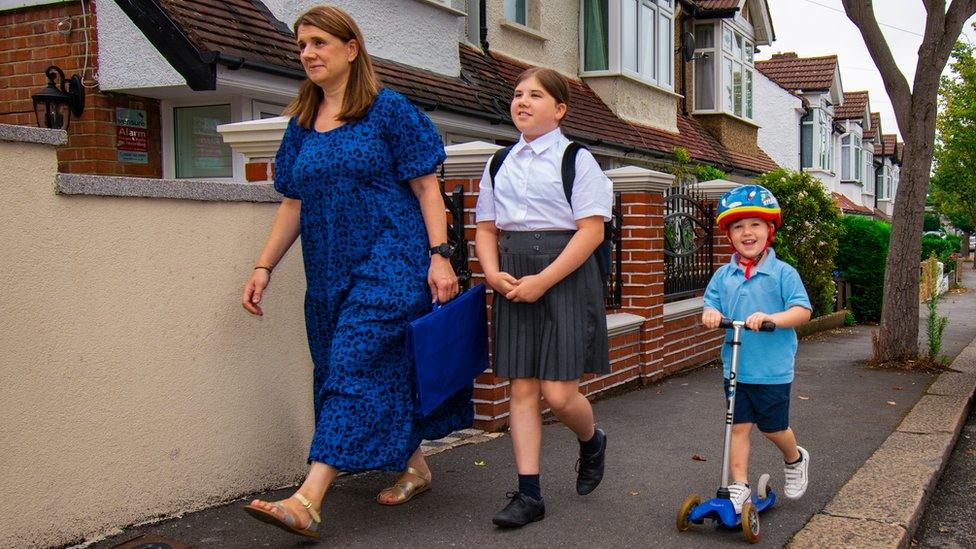
The government is hoping more pupils will switch to walking and cycling
Pupils are also being encouraged to walk, cycle or use a scooter to get to school where possible.
At least 50% of school journeys of two miles or less are taken by public bus, according to the government, which wants more people to switch to walking or cycling to free up space. In cities including London and Manchester, "school streets" schemes have been introduced, which limit car access outside schools at drop-off and pick-up times to make walking and cycling safer.
For those who live too far to walk, Rosalind Searle says the decision in Scotland to make face coverings compulsory, provides some reassurance.
"I think it will definitely make my daughter more confident about going on the bus," she says. "She hasn't been in school for about five months so she just needs a bit of help with that transition."
Related topics
- Published7 March 2021
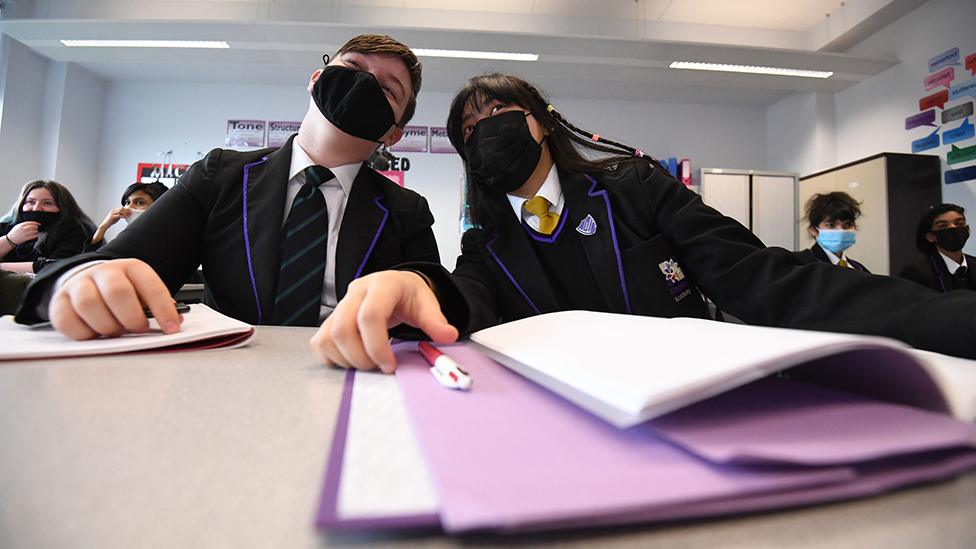
- Published21 May 2021
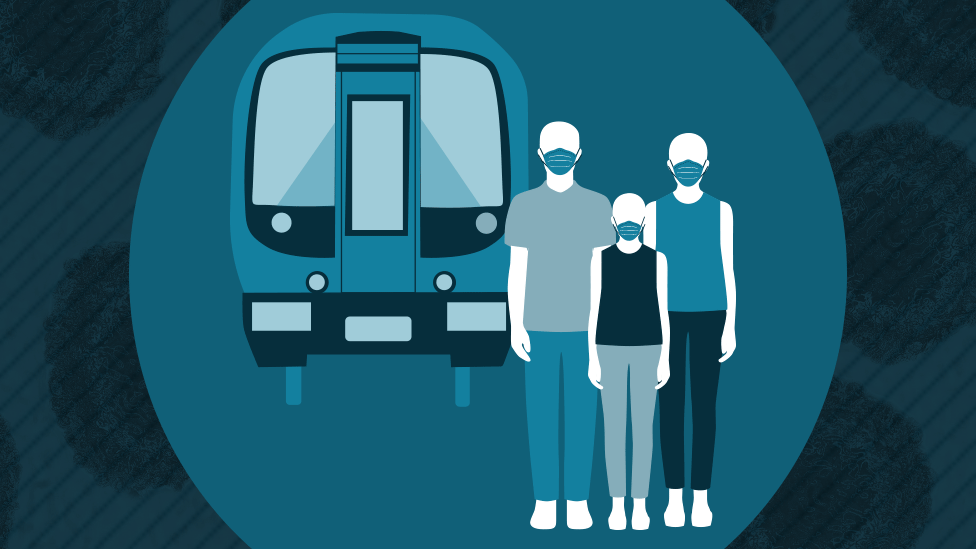
- Published23 February 2022

- Published23 August 2020
